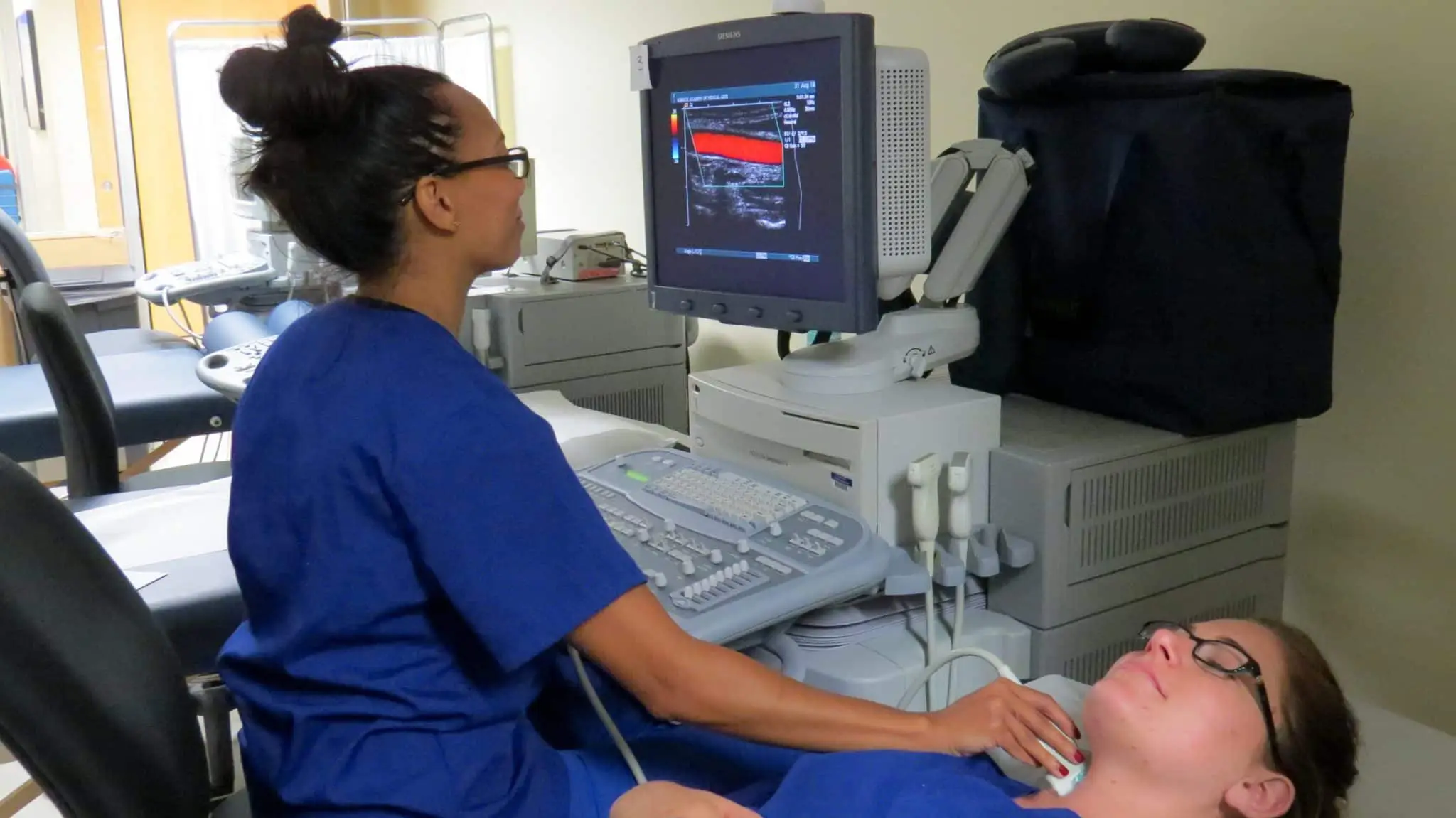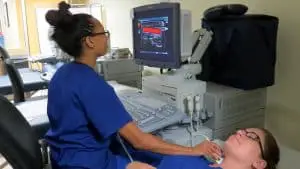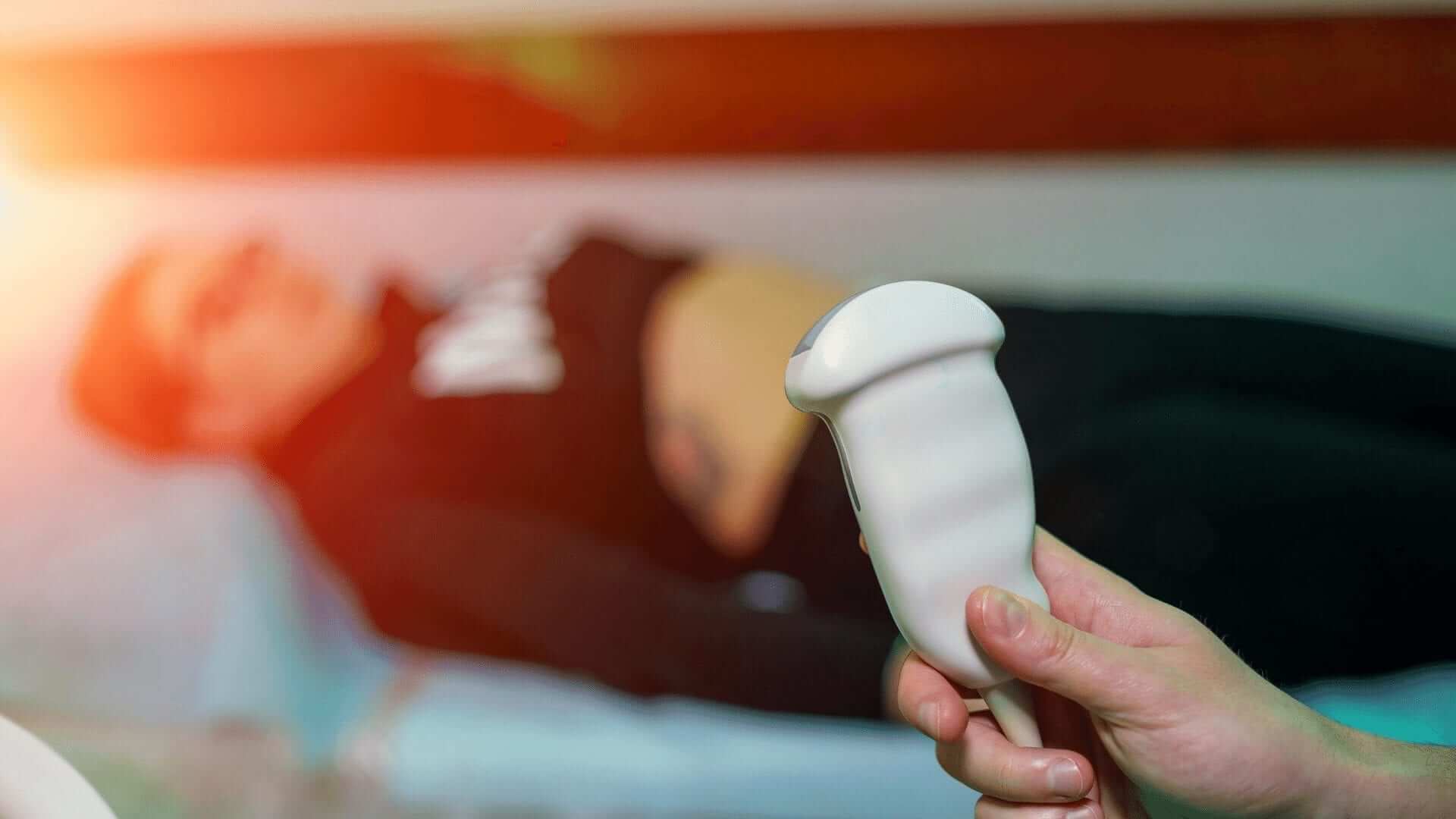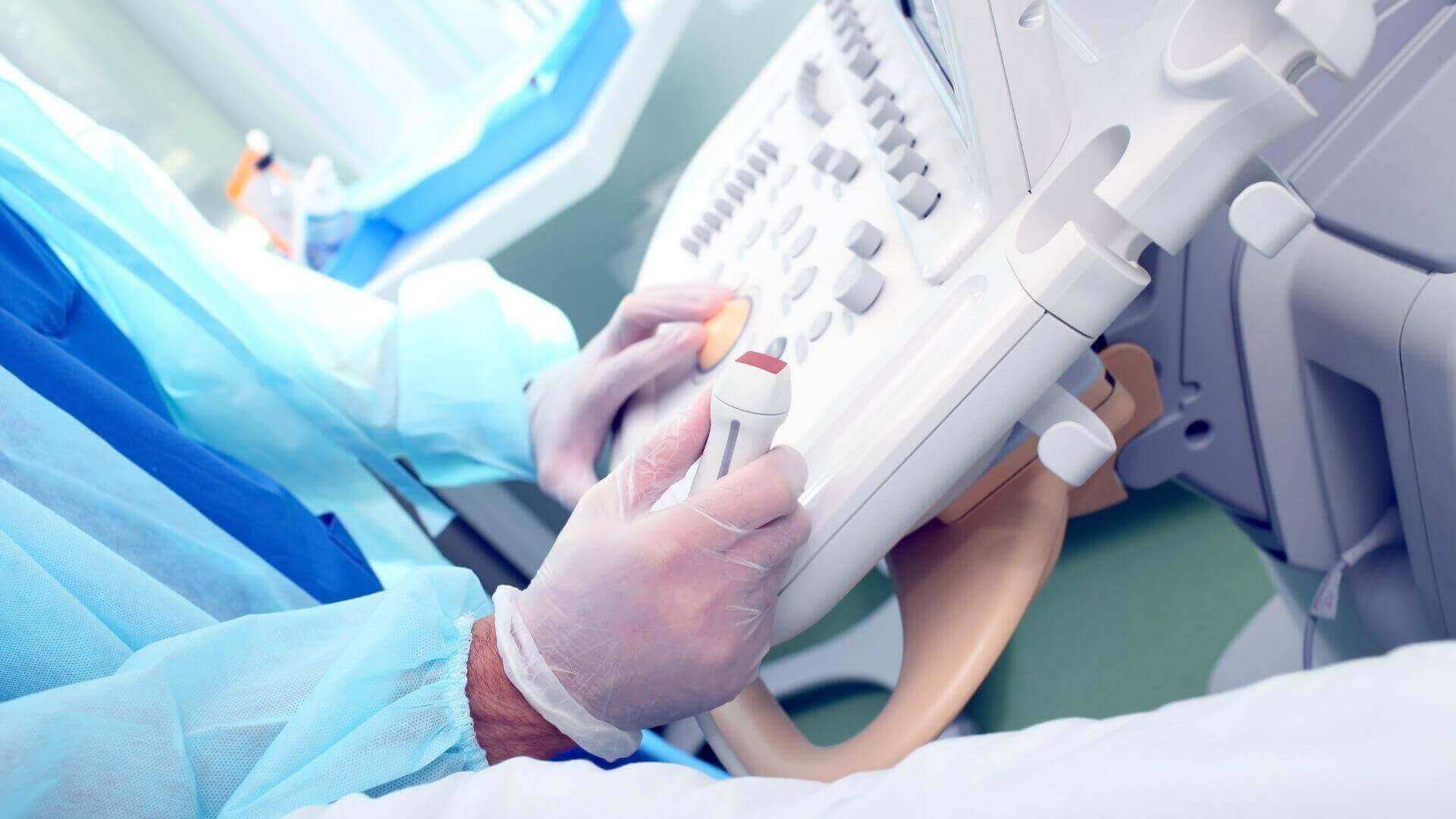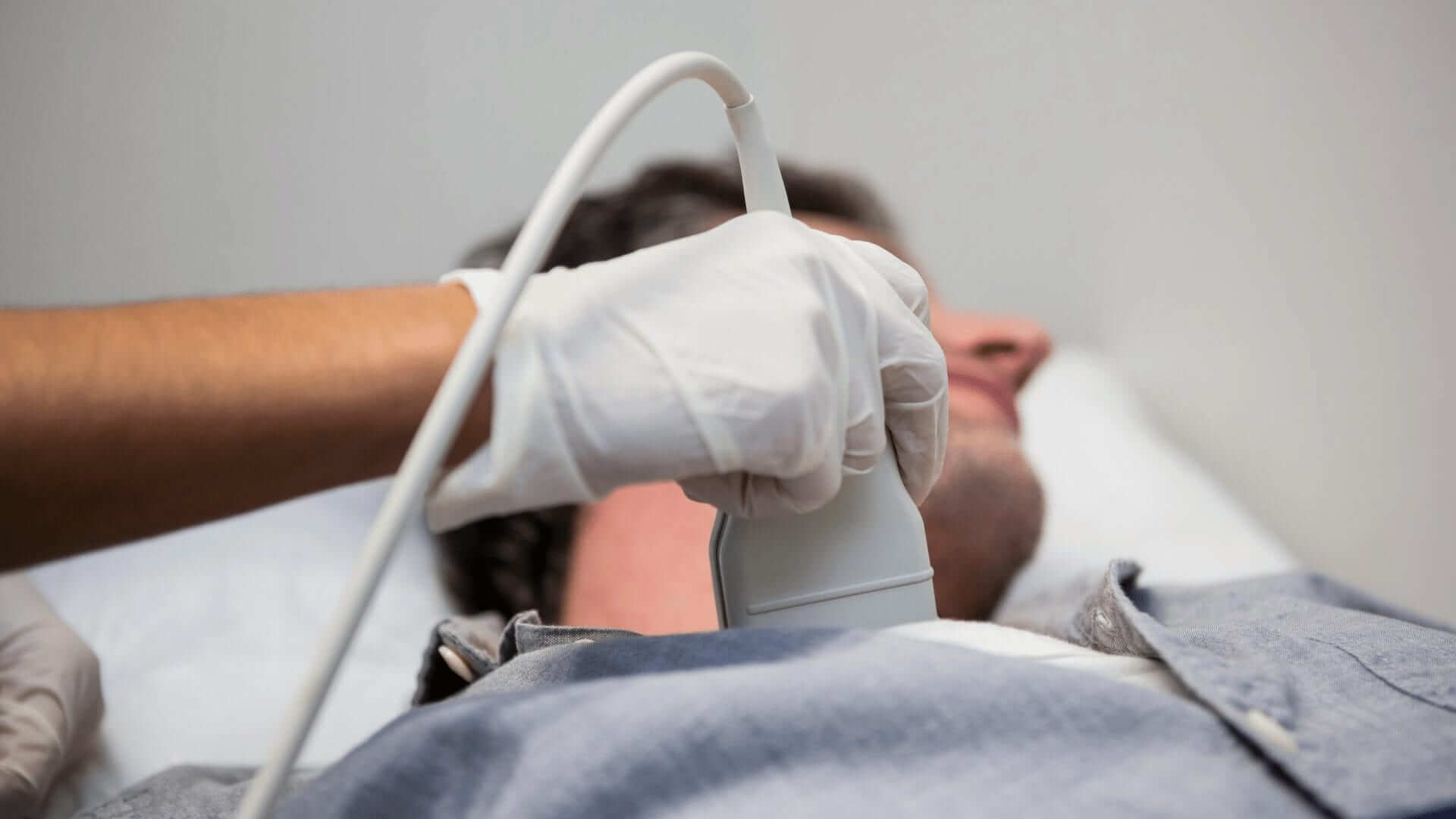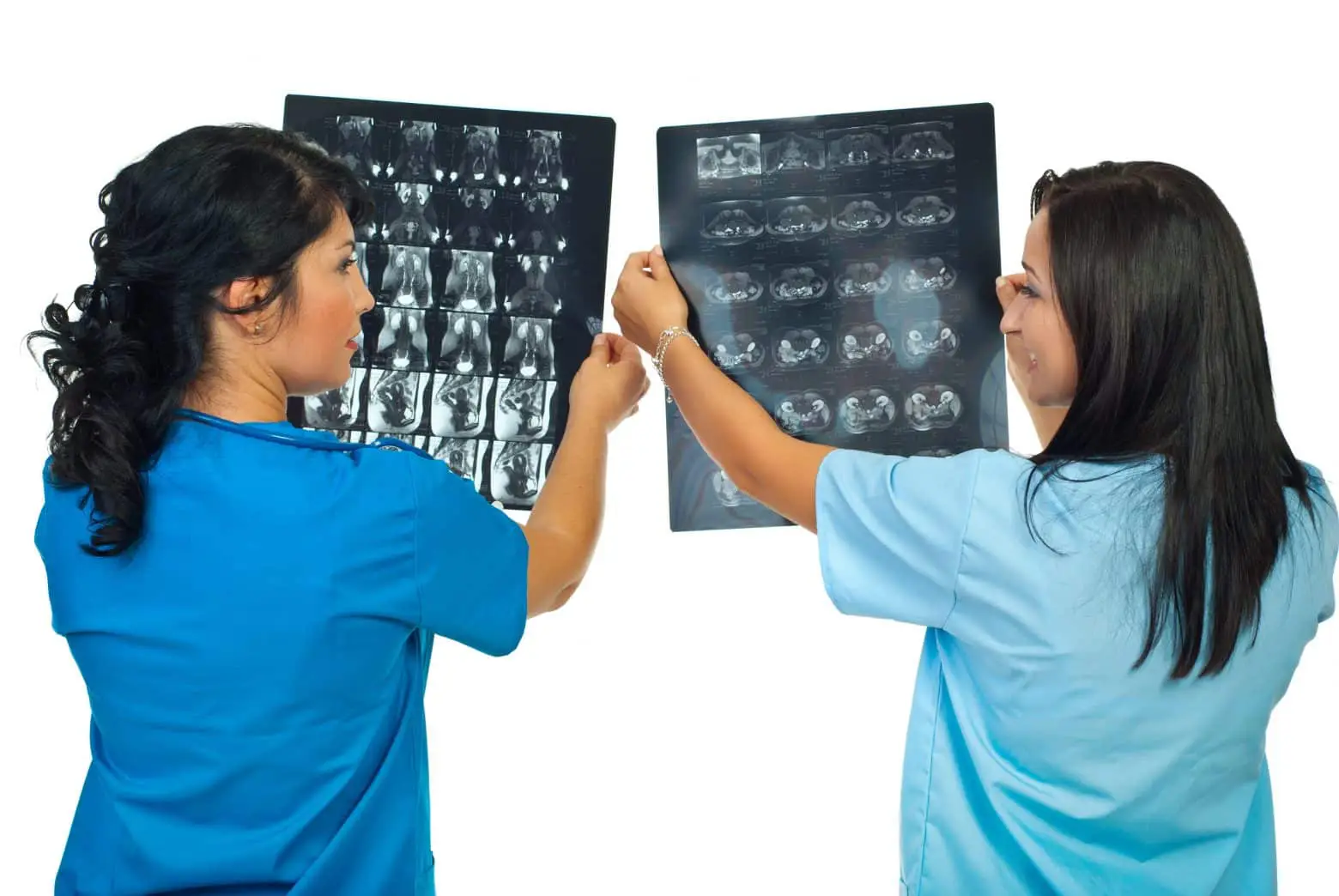Research to Find the Right Medical Sonography Program
Date: August 2, 2022
When your Uncle Frank said the doctor ordered an ultrasound to assess his gallstones, you thought perhaps Frank’s hearing was a bit off. But, you soon realized ultrasounds had other uses beyond your baby’s first black-and-white prenatal picture.
Then, when your friendly neighbor underwent an ultrasound to locate her ever-present joint inflammation, you recognized the procedure was gaining medical popularity.
What is an Ultrasound?
An ultrasound procedure is done by placing a handheld transducer in contact with an area of the patient’s body to be examined. Then, the transducer emits high-frequency sound waves that pass through the body, sending back “echoes” as they bounce off organs and tissues. Whereby specialized equipment then converts the echoes into images.1
Once mysterious internal areas, soundwaves now allow us to collect copious information. With ultrasounds, we may detect the human bean-shaped kidney, view the cone-shaped liver, glimpse the soft, purple spleen, or generate photographs of the thyroid glands.2 Once located, and then recorded, we may even tape prints of these organs to our kitchen fridges! Sonography is truly a remarkable achievement in medical science.
Sonography: A Growing Profession
The functionality and use of Diagnostic Medical Sonography is not just a growing procedure, but the study of it is also an expanding vocation. One doesn’t need to go to medical school to learn sonographic principles. Modern academia has offerings at community colleges, trade schools, nursing schools, and four-year colleges practically everywhere. One can most often locate an ultrasound sonography program simply by searching online. But while you may only be three clicks away from a training option, you should do some due diligence when selecting your program. Finding a good program includes the following items.
1. Vet Your Future Program
Generally, programs range from one to four years in length, with a certificate or degree awarded upon completion. Gurnick Academy of Medial Arts offers two sound or radio wave programs, including the following:
- Associate of Occupational Science in Ultrasound Technology (UT)
- Associate of Science in Magnetic Resonance Imaging (MRI)
When researching a program’s strengths, your checklist should include questions regarding tuition, program length, classroom size, program criteria, accreditation, location, school culture, and other amenities such as equipment, types of labs, and library services. One of the most vital aspects of Gurnick Academy’s program is the clinical training portion. During clinical training, students gain practical experience within affiliated clinical sites. Many future Sonographers find clinical rotations a great way to gain real-life experience while practicing their skills with actual patients.
2. Learn Your Program’s Requirements
Know that qualifications and prerequisites vary from program to program. While some schools insist on a high school diploma, others don’t require it. Some courses require specific prerequisites to enter. Other schools waive experience and credits and only demand that students be teachable. Admission to Gurnick Academy’s Sonography program requires the following:
- Attend an information session.
- Submit original transcripts from the registrar at an educational institution for some/all general education courses. Copies are not accepted. All coursework must be completed and receive a “C” or better. Anatomy and Physiology I with Laboratory must be finished within the last five (5) years.
- Complete the distance education questionnaire.
- Submit a one-page essay in APA format that includes:
- Statement of why you want to join the modality.
- The essential functions and role of a technologist in this field.
- Preparation to become successful in this program.
- Sources used to prepare for the essay.
3. Make Sure Your Program is Accredited
Before enrolling, you should always verify a school’s accreditation. What is accreditation, and why is it important? Accreditation is the voluntary process of self-regulation and peer review adopted by an educational community. For accreditation, institutions of higher learning voluntarily enter into associations to evaluate each other per an institution’s stated goals.3 If a school is accredited, it underwent a third-party review and was found to meet specific academic standards. Further, accreditation is favorably recognized by employers and signifies a certain level of mastery.
Beyond the official stamp of accreditation, properly going about one’s education signifies you respect the profession enough to be trained correctly. Undergoing certain academic rigors will make you a better healthcare provider later.
4. Schedule a Tour
Even though you can locate a school quickly online, physically visiting your future program is preferable. Touring a school’s campus allows one to learn critical information. One can gain glimpses into a day in a student’s life, talk with staff members, explore the school’s facilities, and speak with knowledgeable people regarding one’s future program. Because a significant portion of a Diagnostic Medical Sonography program involves practical, hands-on sessions, a reputable ultrasound school will have a well-equipped laboratory with accouterments.
Schedule your tour with a Gurnick Academy of Medical Arts admission advisor. Contact our Admissions Department today.
5. Research Basic Next Steps, Keep Researching
Since the entire field of Diagnostic Medical Sonography is proliferating, and newer technologies are released daily, one should stay abreast of industry trends. Like other healthcare professionals, Sonographers must be lifelong learners long after the classroom doors close. Some venues for lifelong learning include:
- Industry Blogs
Two current industry blogs that target Sonography professionals are:
- Peer Forums and Groups
These are usually available on campuses and within one’s specific department. You may need to ask a fellow student or an academic advisor to help locate a local or campus-based group.
- Professional Organizations
Professional groups can be helpful venues for learning about certification, continuing education credits (CECs), license renewal information, current job listing, industry trends, time-savers, and little-known professional secrets. Some recognized societies within this industry include some of the following:
- Social Media Groups
Once purely recreational, social media now offers spaces for academic discussions and relevant FAQs. They are also natural places for professional networking. Some platforms to check out include the following:- (Facebook) Ultrasound Imaging-Sonography
- (Twitter) SONICS-Medical Student Ultrasound Interest Group
- (Instagram) #ultrasoundtechnician
- (LinkedIn) World Federation for Ultrasound in Medicine and Biology
- Books
Find the Best, an online resource webpage, offers the following list of “19 Best Ultrasonography Books” worth reading about the profession. See their top list of books by clicking here.
Summary
Your education commences with the “right-for-you” diagnostic medical sonography program. But your learning does not end there. The “right-for-you” program should instead ignite a passionate quest for ongoing knowledge.
With the right-for-you program, the next time Uncle Frank tells you about his gallstones, you might be able to draw a picture of this area and articulate why a Sonographic Ultrasound was ordered. Or, with the proper education, when your friendly neighbor speaks again about her joint inflammation, you might explain why an Ultrasound was the preferential procedure.
Isn’t it time you found the right-for-you sonography program? Please browse through our program offerings today.~
By Cindy R. Chamberlin.
Citations:
1 Staff. “Careers in Radiologic Technology.” American Society of Radiologic Technologists (ASRT). 2019. (Accessed March 2, 2022.)
2 Radiology (ACR), Radiological Society of North America (RSNA), and American College of. “General Ultrasound.” Radiologyinfo.org, Radiological Society of North America, Inc. June 15, 2020. (Accessed August 29, 2022.)
3 “The Importance of Accreditation.” Mhec.maryland.gov, Maryland.gov. (Accessed August 26, 2022.)

